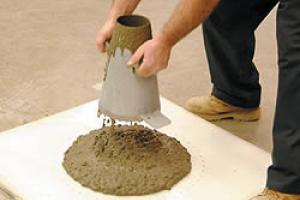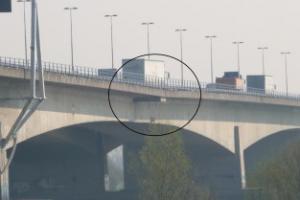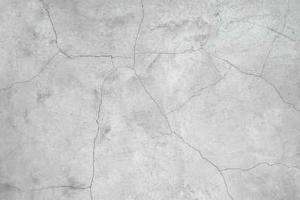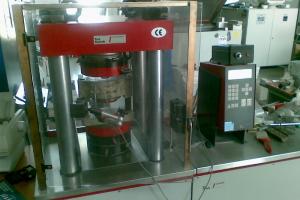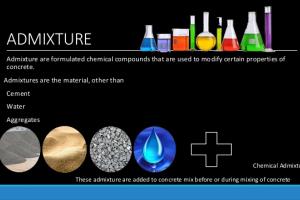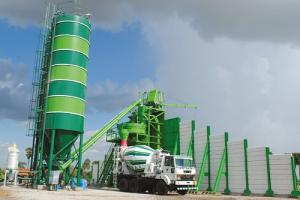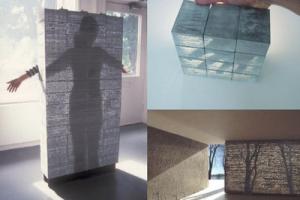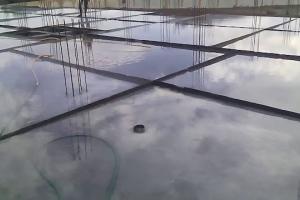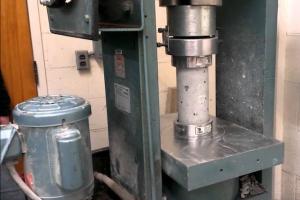Types of Concrete and their Characteristics
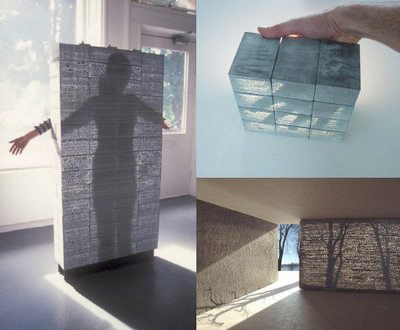
Types of Concrete
Some common and main types of concrete are:
Explanation of different types of concrete are as below:
-
The concrete in which common ingredients i.e. aggregate, water, cement are used is known as normal concrete. It is also called normal weight concrete or normal strength concrete.
-
It has a setting time of 30 - 90 minutes depending upon moisture in atmosphere, fineness of cement etc.
-
The development of the strength starts after 7 days the common strength values is 10 MPa (1450 psi) to 40 MPa (5800 psi). At about 28 days 75 - 80% of the total strength is attained.
-
Almost at 90 days 95% of the strength is achieved.
![]() See Also: Concrete Tests | Properties of Concrete
See Also: Concrete Tests | Properties of Concrete
- Air Entrained Admixures
- Properties of Fresh Concrete
- Hardened Concrete Properties
- High Strength Concrete
Properties of Normal Concrete
-
Its slump varies from 1 - 4 inches.
-
Density ranges from 140 pcf to 175 pcf.
-
It is strong in compression and weak in tension.
-
Air content 1 - 2 %.
-
Normal concrete is not durable against severe conditions e.g. freezing and thawing.
-
Compressive strength of high strength concrete mix is usually greater than 6,000 pounds per square inch.
-
High strength concrete is made by lowering the water cement (W/C) ratio to 0.35 or lower.
-
Often silica fume is added to prevent the formation of free calcium hydroxide crystals in the cement, which might reduce the strength at the cement aggregate bond.
-
Low w/c ratios and the use of silica fume make concrete mixes significantly less workable, which is particularly likely to be a problem in high-strength concrete applications where dense rebar cages are likely to be used. To compensate for the reduced workability in the high strength concrete mix, superplasticizers are commonly added to high-strength mixtures.
-
Aggregate must be selected carefully for high strength mixes, as weaker aggregates may not be strong enough to resist the loads imposed on the concrete and cause failure to start in the aggregate.
This mix has the following main properties:
- High strength.
- High workability.
- High durability.
- Ease of placement.
- Compaction without segregation.
- Early age strength.
- Long-term mechanical properties.
- Permeability.
- Density.
- Heat of hydration.
- Toughness.
- Volume stability.
- Long life in severe environments.
Preparation of High Performance Concrete Mix
High strength concrete mix can be prepared with careful selection of ingredients and optimization of mix design.
-
High workability is attained by super plasticizers, they lower the water cement ratio to 0.25 which is the amount required only for hydration process.
-
High durability is attributed to fly ash and silica fume which modify the e mineralogy of the cement; it enhances the compatibility of ingredients in concrete mass and reduces the CH amount. Fly ash also causes ball bearing effect increasing workability.
-
The admixtures are 20-25% fly ash of partial replacement of cement and rest 70% is Ordinary Portland Cement.
-
As it is not usually durable against freezing and thawing so air entrained agents can also be utilized.
Properties of high performance concrete mix
-
Strength of high performance concrete ranges from 10000 psi - 15000 psi
-
Water cement ratio can be reduced to 0.25
-
One of the greatest achievements in field of concrete technology is development the type of concrete called air entrained concrete. It is used where the concrete is vulnerable to freezing and thawing action.
-
This type of concrete is used where the concrete is vulnerable to freezing and thawing action. It is prepared by adding the air entraining admixture.
The air entrainment in concrete does the following functions:
-
It lowers the surface tension of water and thus bubbles are created.
-
Secondly the air entraining agents prevents coalescing i.e. the combining of bubbles. The diameter of these bubbles ranges form 10 micrometer to 1000 micrometer and in entrapped air the diameter of bubble is greater than 1mm.
Air entraining agents OR air entrained admixtures are used for the purpose of making entrained air in concrete.
Freezing and Thawing of Concrete:
There are two phenomenons regarding the freezing and thawing action on concrete.
-
when water inside concrete mass freezes it expands 9-10% due to this increase in the size it exerts pressure on its surrounding and thus creating a tensile force due to which micro cracks appear in the concrete. Due to freezing these micro cracks develop into fissures which results in disruption of concrete.
When the air entrained agents are present, extra amount of air is there as water expands these air bubble provide them thin space and the exertion of pressure is prevented.
-
Second is of osmotic pressure: In a concrete structure there are two parts, frozen and unfrozen. As the water content is higher in the frozen part, the osmotic pressure is developed and water tends to flow towards the low water concentration part. If capillaries are not available, the water develops cracks.
-
Normal concrete can not sustain 3-4 cycles of freezing and thawing where as the AEA concrete can sustain 100 cycles of it.
DRAW BACKS of Air Entrained Concrete:
-
It has low strength as compare to normal concrete.
-
The concrete which has substantially lower mass per unit volume then the concrete made of ordinary ingredients is called lightweight concrete. The aggregates used are lighter in weight.
-
Density of light weight concrete is 240 kg/m³ (15pcf) -1850 kg/m³ (115 pcf).
-
Strength of light weight concrete blocks varies from 7 MPa (1000 psi) - 40 MPa (5800 psi).
-
Some times Air Entrained Admixtures are also added to it giving resistance to freezing and thawing along with strength.
Uses of Light weight concrete:
-
Used where extra load is not applied e.g. parapet wall, road lining etc. or to reduce dead load.
The concrete where no vibration is required. Of different types of concrete, Self compacting concrete does not require any vibrator for compaction. The concrete is compacted due to its own weight. It is also called self consolidated concrete or flowing concrete. It can be also categorized as high performance concrete as the ingredients are the same, but in this type of concrete workability is increased. This self-consolidating concrete is characterized by:
-
Extreme fluidity as measured by flow, typically between 650-750 mm on a flow table, rather than slump (height).
-
No need for vibrators to compact the concrete.
-
Placement being easier.
-
No bleed water, or aggregate segregation.
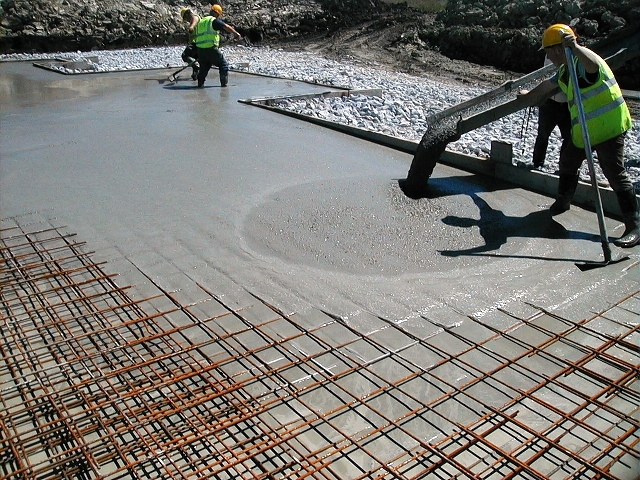
Uses and Applications of Self Compacting Concrete:
- It is used in location unreachable for vibrations. e.g. underground structure, deep wells or at bottom of deep sea.
- SCC can save up to 50% in labor costs due to 80% faster pouring and reduced wear and tear on formwork.
-
It is one of the types of concrete which uses compressed air to shoot concrete onto (or into) a frame or structure.
-
Shotcrete is mortar or (usually) concrete conveyed through a hose and pneumatically projected at through a shortcrete nozzle with high velocity onto a surface. Shotcrete undergoes placement and compaction at the same time due to the force with which it is projected from the nozzle.
-
It can be impacted onto any type or shape of surface, including vertical or overhead areas.
-
This type of concrete is frequently used against vertical soil or rock surfaces, as it eliminates the need for formwork.
-
It is sometimes used for rock support, especially in tunneling.
-
Shotcrete is also used for applications where seepage is an issue to limit the amount of water entering a construction site due to a high water table or other subterranean sources.
-
Of different types of concrete, shotcrete is often used as a quick fix for weathering for loose soil types in construction zones.
-
Pervious concrete contains a network of holes or voids, to allow air or water to move through the concrete. This allows water to drain naturally through it, and can both remove the normal surface water drainage infrastructure, and allow replenishment of groundwater when conventional concrete does not.
-
It is formed by leaving out some or the entire fine aggregate (fines), the remaining large aggregate then is bound by a relatively small amount of Portland cement.
-
When set, typically between 15% and 25% of the concrete volumes are voids, allowing water to drain.
-
The majority of pervious concrete pavements function well with little or no maintenance. Maintenance of pervious concrete pavement consists primarily of prevention of clogging of the void structure.
-
In preparing the site prior to construction, drainage of surrounding landscaping should be designed to prevent flow of materials onto pavement surfaces. Soil, rock, leaves, and other debris may infiltrate the voids and hinder the flow of water, decreasing the utility of the pervious concrete pavement.
-
Roller compacted concrete, sometimes called rollcrete, is a low-cement-content stiff concrete placed using techniques borrowed from earthmoving and paving work.
-
It is usually made by replacing some content of cement (OPC) with fly ash.
-
The concrete is placed on the surface to be covered, and is compacted in place using large heavy rollers typically used in earthwork.
-
In this type of concrete, the mix achieves a high density and cures over time into a strong monolithic block.
-
Roller compacted concrete is typically used for concrete pavement. Roller compacted concrete dams can also be built, as the low cement content causes less heat to be generated while curing than typical for conventionally placed massive concrete pours.



